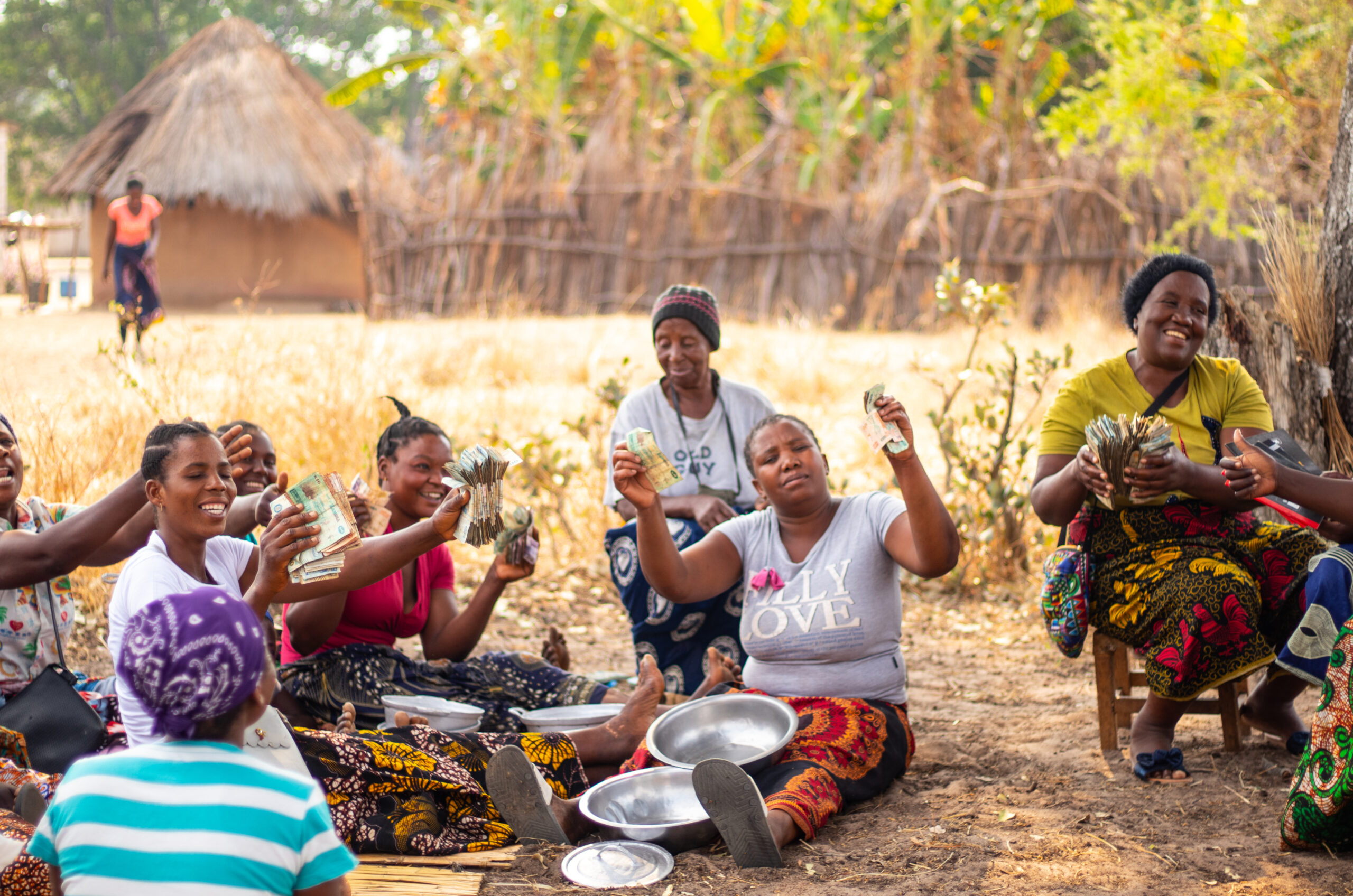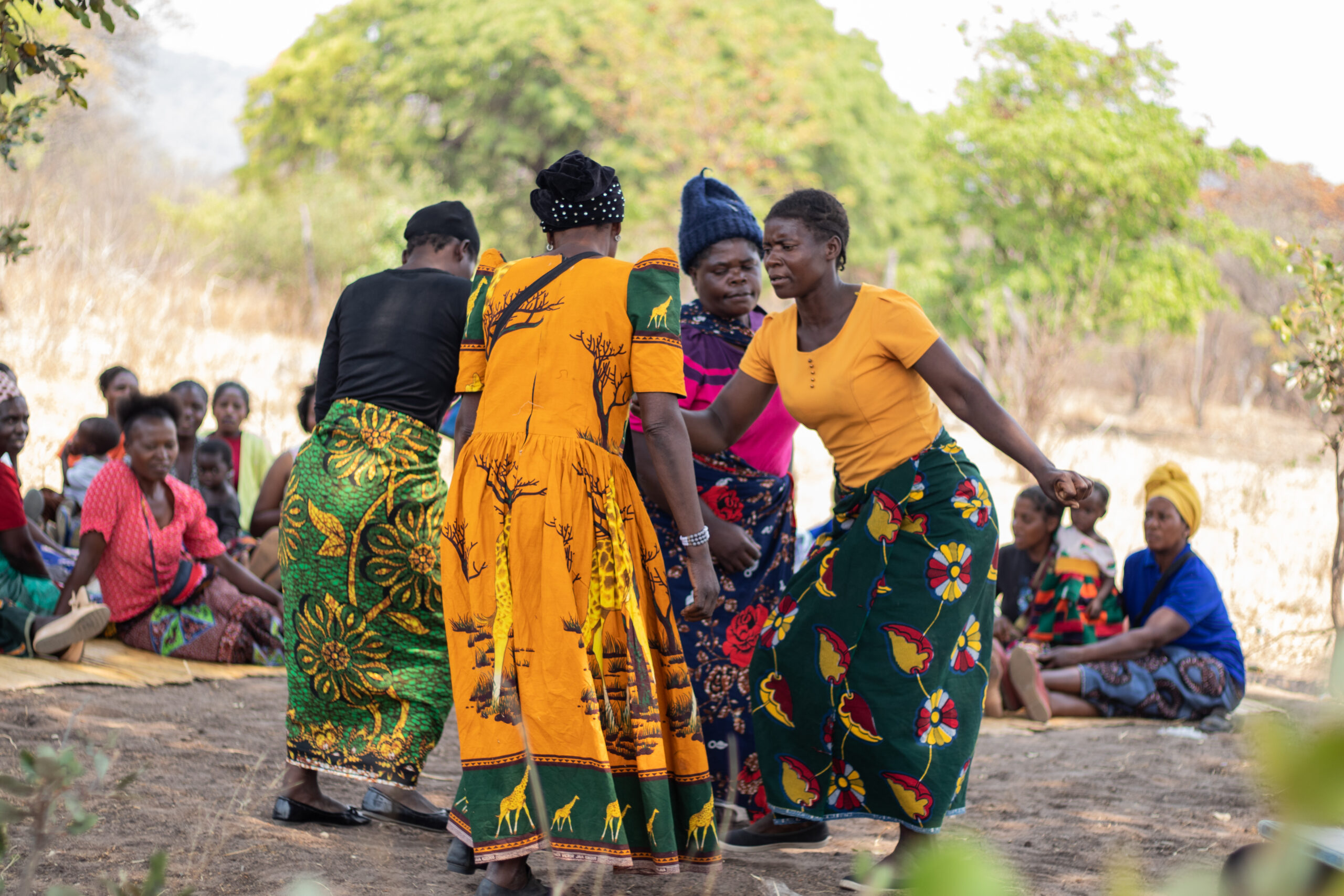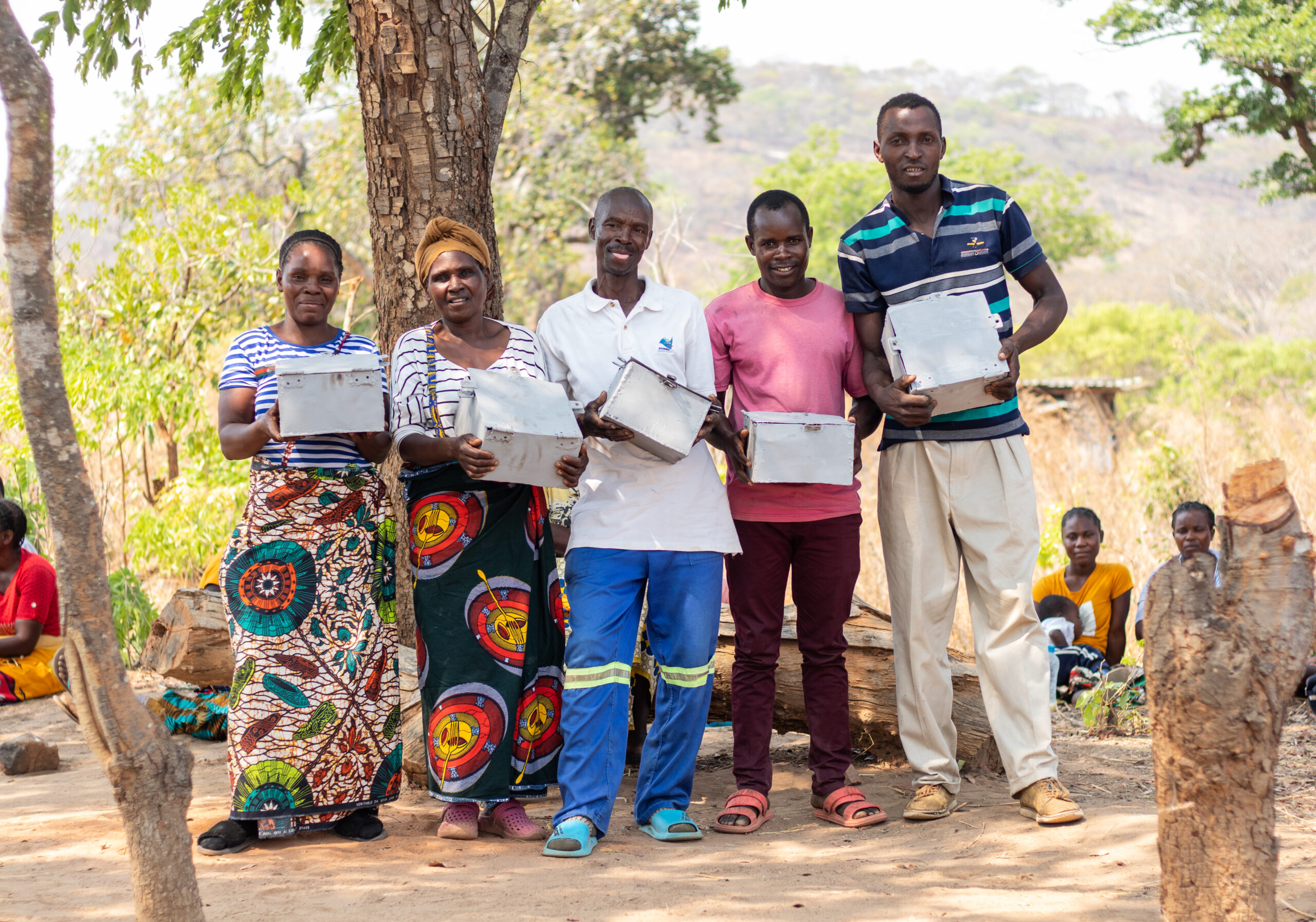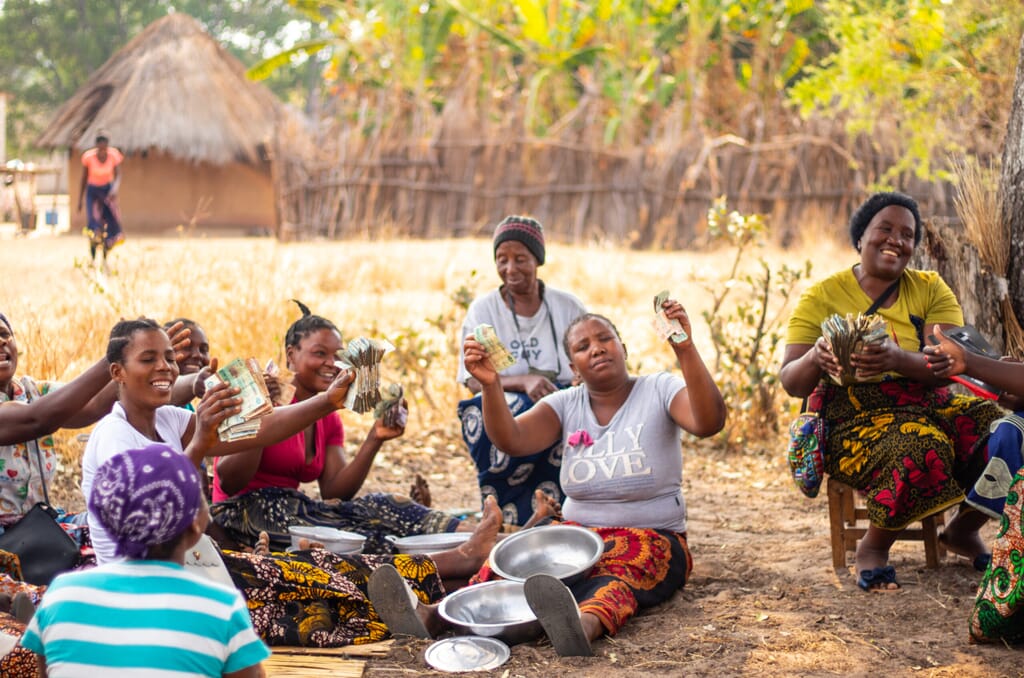How REDD+ is funding access to the formal economy and sustainable development for rural communities through village banking projects, in the Luangwa to Lower Zambezi valleys.

About 2 billion people, across roughly 450 – 500 million households in the collective global South, depend on forest landscapes to meet their basic needs and generate income (Verdone 2018; Wild et al. 2021). However, this essential resource base continues to be threatened by climate change, deforestation, and degradation. As such, rural smallholders represent both the most vulnerable group to climate change as well as the largest group of potential environmental stewards in the world (Mwansakilwa et al. 2017; Wild et al. 2021). Despite the risk they face and the potential they have to catalyze large-scale transformational change at a landscape level, smallholders continue to be excluded from the global economy and continue to lack access to critical financial services and other basic human rights.
This ongoing financial exclusion can be attributed to a number of reasons, including the perceived risk in extending credit to the poor, the low population density in rural villages, lack of capacity, poor connectivity, and the relatively volatile and erratic income from agriculture production (Colenbrander, Dodman & Mitlin 2018; Mwansakilwa et al. 2017; Oostendorp et al. 2019; Wild et al. 2021). The result is that up to 80% of rural smallholder populations are “unbanked” and lack access to financial services (Mwansakilwa et al. 2017; Oostendorp et al. 2019; Wild et al. 2021). These financial services are essential to help support a transition away from current extractive and environmentally unsustainable livelihoods towards more resilient, adaptive, and climate-smart livelihoods and village economies – with losses in ecosystem goods and services costing an estimated US$6.3 trillion/year (Wild et al. 2021). Investing in rural smallholders is not only a cost-effective means to reduce economic and environmental losses but also an essential opportunity to start to address current and historical inequities by integrating and uplifting the most marginalized and vulnerable in the world (Colenbrander, Dodman & Mitlin 2018).
One promising tool to extend financial services and invest in rural livelihoods and village economies is through village loan and savings groups (VLSG). VLSGs seeks to address the challenges of offering credit to the rural poor by organizing groups of people who subsequently pool their savings to have a common source of funds, or a collective “bank”, from which loans can be given to members (Mwansakilwa et al. 2017; Oostendorp et al. 2019, Wild et al. 2021). VLSGs are built off the principles of both self-organization and self-determination. Groups are initiated by members who contribute savings to a collective bank. Funds grow from mutually agreed interest rates on loans and continued further contributions from members. Finally, groups are governed through a set of agreed-upon rules enshrined in the group’s constitution.

In an unofficial setting, VLSGs have long existed within communities through an evolution of informal forms of rotating savings and credit associations (Mwansakilwa et al. 2017; Oostendorp 2019). More recently, VLSGs have moved beyond proof of concept and demonstrated widespread scalability in more formal and semi-formal financial systems. CARE International estimates that 357,000 groups, comprising 15.2 million members, across 61 countries all contribute US$500 million/year to the industry (Mwansakilwa et al. 2017; Wild et al. 2021). Evidence universally shows the positive impacts of membership in VLSGs ranging from improved food security, increased household welfare as measured by household expenditure and improvements in living conditions (Mwansakilwa et al. 2017; Oostendorp et al. 2019, Wild et al. 2021).
BCP first piloted VLSGs in 2020 in Mwanya Chiefdom (one of our partners under the Luangwa Community Forests Project), Lumezi District, Eastern Province, Zambia. As part of BCP’s benefit-sharing agreement with communities, funds from REDD+ carbon offsets, sold by BCP on behalf of Chiefdoms, are distributed semiannually to Community Forest Management Groups (CFMG). These funds, which are managed by the CFMGs, are subsequently invested in different community development projects and livelihood projects. The projects are selected through a bottom-up participatory needs assessment where all the villages in a given Chiefdom are given the opportunity to suggest, rank, and agree on which projects will be implemented in the upcoming year.
As part of the 2020 needs assessment process in Mwanya Chiefdom, financial support for establishing 20 village banking clubs was motivated by community members, selected as a project by the CFMG, and allocated ZMW50,000 (approximately US$2,500). Between August 2020 and August 2021, the groups collectively increased their savings by 494% to ZMW293,937 (approximately US$15,000)!
The outcome of the project has been:
In order for climate finance and carbon offset projects to realize their potential in contributing to a more environmental and socially just future, the citizens of the global south, who are most vulnerable and negatively impacted by climate change, need to be given the freedom, resources, and power to make choices on how to secure their basic needs. Using climate finance and VLSGs to offer financial services and build the bankable credit of marginalized communities represents a tremendous opportunity to move closer to this goal (Colenbrander, Dodman & Mitlin 2018; Mwansakilwa et al. 2017; Oostendorp et al. 2019, Verdone 2018; Wild et al. 2021).

In addition to the current and immediate benefits, significant opportunities to further grow the potential of VLSGs are fast emerging. Technological advances in mobile and blockchain technology offer the opportunity to better connect people and groups, create digital banking identities, and safely pool resources at scale (Wild et al. 2021). Enhancing and improving green value chains in the VLSG model holds the opportunity to improve access to critical inputs and markets in a more equitable and efficient way (Oostendorp et al. 2019; Wild et al. 2021). Finally, VLSGs offer a definitive pathway to introduce other financial products and services such as micro-insurance schemes and funeral cover for members (Colenbrander, Dodman & Mitlin 2018; Oostendorp et al. 2019; Wild et al. 2021). When we consider the amount that families are expected to pay towards the costs of funerals (often incurring debt to do so based on societal expectations), and how the cost of healthcare dissuades the rural poor from accessing healthcare, this degree of inclusive financial mechanism offers the potential to significantly improve quality of life.
For too long the development system has treated the global south as passive beneficiaries of aid. Based on this example of VLSGs as evidence, what is needed are greater opportunities to promote control over and give financial decision-making power to individuals and communities. In doing so, a more equitable and sustainable financial system can be realized through a bottom-up process that empowers marginalized communities. Furthermore, when VLSGs are underpinned by climate financing/REDD+ payments to communities, a long-term, economically viable, ecologically sustainable, and locally relevant development model is given space to emerge. So successful was the pilot project in Mwanya, that BCP has scaled the initiative into a number of other Chiefdoms that we partner with, including; Chitungulu, Bunda Bunda, Nsefu, Mnkhanya, Malama, and Sandwe (with more in the pipeline – watch this space!)
References:
Colenbrander, S., Dodman, D. & Mitlin, D. 2018. ‘Using climate finance to advance climate
justice: the politics and practice of channeling resources to the local level’, Climate Policy, 18(7): 902-915.
Mwansakilwa, C., Tembo, G., Mwamba Zulu, M. & Wamulume, M. 2017. ‘Village savings and loan
associations and household welfare: Evidence from Eastern and Western Zambia’ African Journal of Agricultural and Resource Economics, 12(1): 85-97.
Oostendorp, R., van Asseldonk, M., Gathiaka, J., Mulwa R., Radeny, M., et al. 2019, Inclusive
agribusiness under climate change: a brief review of the role of finance Current Opinion in Environmental Sustainability, 41:18-22.
Verdone M (2018) The world’s largest private sector? Recognising the cumulative economic
value of small-scale forest and farm producers. Gland, Switzerland: IUCN, FAO, IIED & AgriCord.
Wild, R., Egaru, M., Ellis-Jones, M., Nakangu Bugembe, B., Mohamed, A., et al. 2021. ‘Using
inclusive finance to significantly scale climate change adaptation’ In Gouge, N., Ayal, D., Adeleke, L. & da Silva, I. eds. African Handbook of Climate Change Adaptation, Spring, Cham. p 2565 – 2590.
